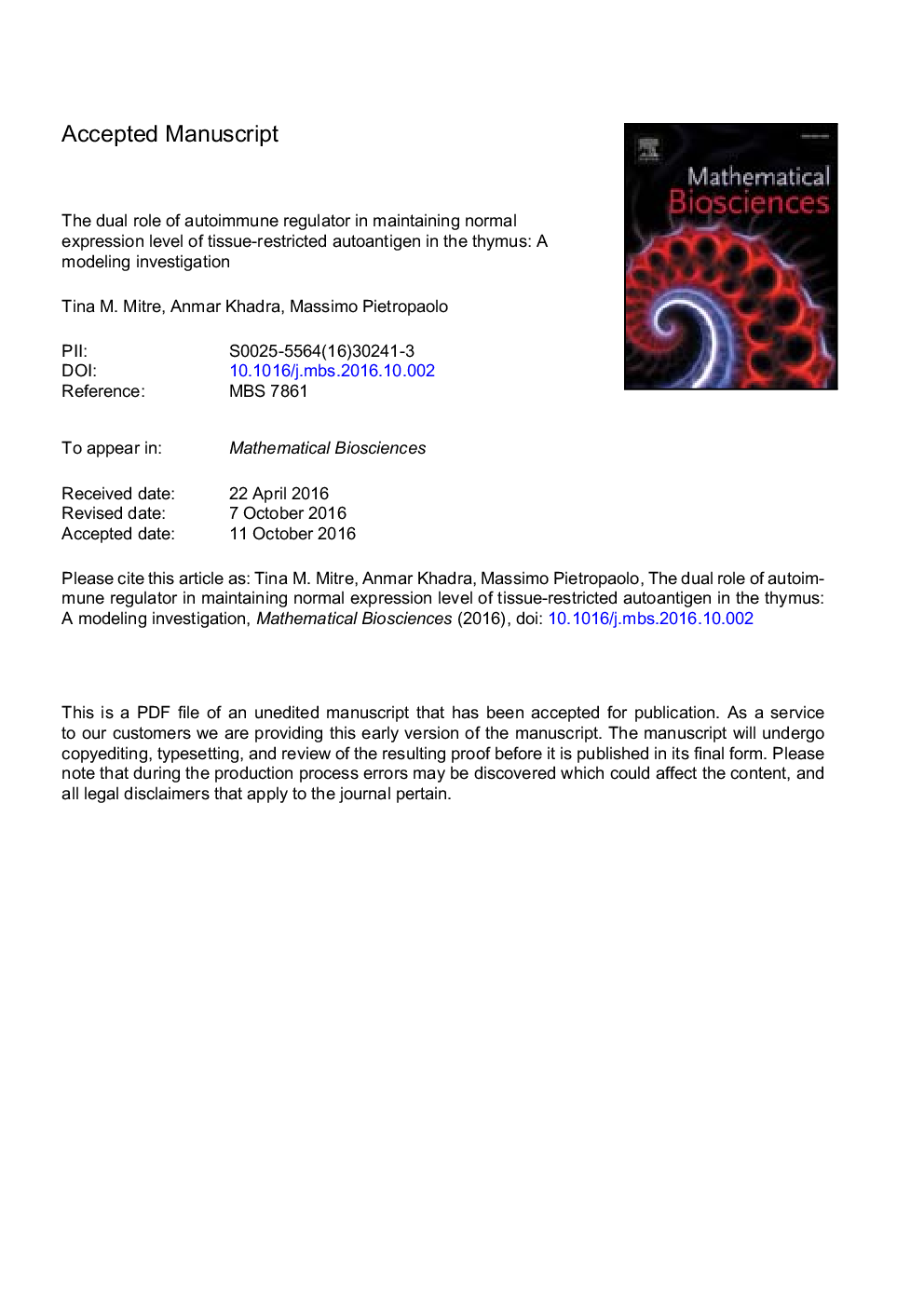| Article ID | Journal | Published Year | Pages | File Type |
|---|---|---|---|---|
| 5760400 | Mathematical Biosciences | 2017 | 29 Pages |
Abstract
The expression level of tissue-restricted autoantigens (TSA) in the thymus is crucial for the negative selection of autoreactive T cells during central tolerance. The autoimmune regulator factor (AIRE) plays an important role in the positive regulation of these TSA in medullary thymic epithelial cells and, consequently, in the negative selection of high-avidity autoreactive T cells. Recent studies, however, revealed that thymic islet cell autoantigen (ICA69) expression level in non-obese diabetic (NOD) mice, prone to developing type 1 diabetes (T1D), is reduced due to an increase in the binding affinity of AIRE to the Ica1-promoter region, which regulates ICA69 protein synthesis. This seemed to suggest that AIRE acts as a transcriptional repressor of Ica1 gene in the thymus, causing down regulation in the expression level of ICA69. To investigate this hypothesis and the apparent dual role of AIRE in negative selection, we develop a series of mathematical models of increasing complexity describing the temporal dynamics of self-reactive T cells, AIRE-mRNA and AIRE-(in)dependent thymic TSA-associated genes. The goal is to understand how changing the binding affinity of AIRE to Ica1-promoter affects both T-cell tolerance and the dual role of the transcription factor. Using stability analysis and numerical computations, we show that the model possesses a bistable switch, consisting of healthy and autoimmune states, in the expression level of Ica1 gene with respect to AIRE binding affinity, and that it can capture the experimentally observed dual role of AIRE. We also show that the model must contain a positive feedback loop exerted by T cells on AIRE expression (e.g., via lymphotoxin released by T cells) to produce bistability. Our results suggest that the expression-level of AIRE-mRNA in the healthy state is lower than that of the autoimmune state, and that negative selection is very sensitive to parameter perturbations in T-cell avidity.
Related Topics
Life Sciences
Agricultural and Biological Sciences
Agricultural and Biological Sciences (General)
Authors
Tina M. Mitre, Massimo Pietropaolo, Anmar Khadra,
